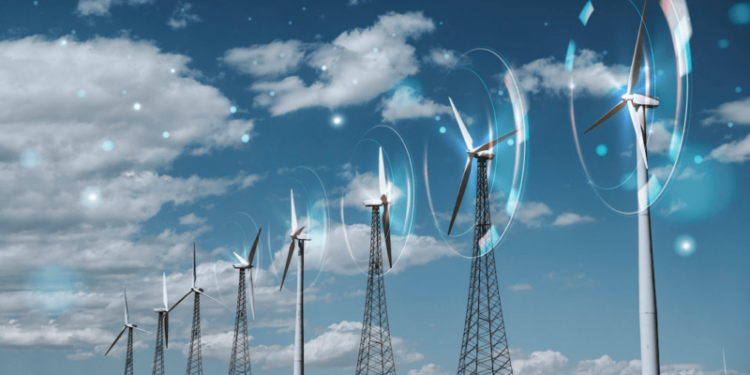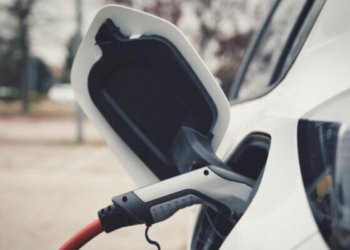Can one plan today reshape how the world powers homes, transport, and industry by mid‑century? This guide explores that challenge and lays out clear steps for a whole‑system shift that cuts greenhouse gases and boosts resilience.
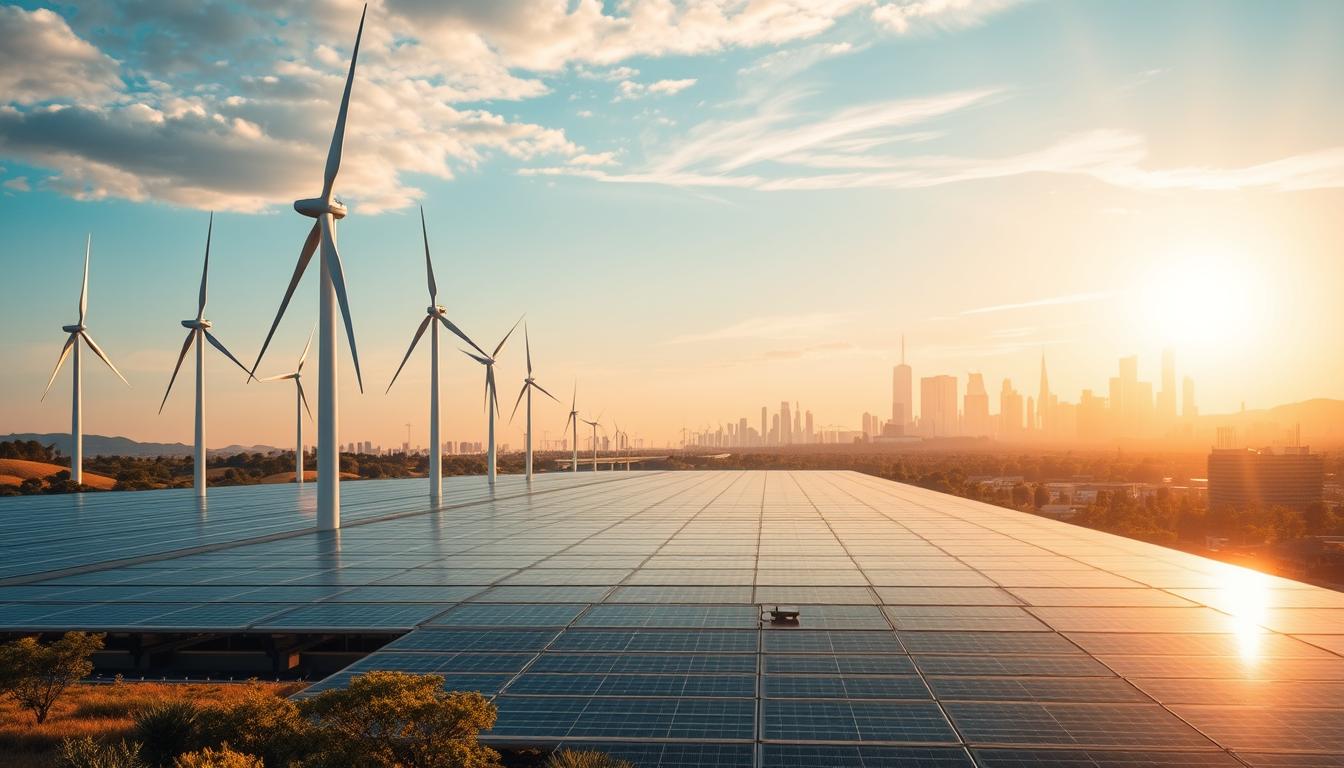
Fossil fuels still supply most power, and the sector drives a large share of emissions. Rapid cost drops in solar, wind, and batteries now make clean options far more competitive in the United States and beyond.
This introduction maps what you will learn: the history of past shifts, current status, core technologies like solar and onshore wind, storage and electrification, grid upgrades, policy and finance, and pathways for industry and buildings. Expect practical actions and a focus on fair outcomes for communities and jobs.
Key Takeaways
- Why now: The sector dominates emissions and recent data shows accelerating climate risk.
- Cost breakthroughs: Solar, wind, and batteries are cheaper and scaleable.
- Whole‑system view: Power, transport, buildings, and industry must evolve together.
- Grid needs: Modern transmission and long‑duration storage are critical.
- Policy push: Global goals from COP28 raise ambition and urgency.
- Just outcomes: Plans must protect vulnerable households and boost jobs.
What the Energy Transition Is and Why It Matters Now
Shifting away from high‑carbon fuels toward low‑carbon electricity and clean fuels is one of the defining tasks of this decade.
The energy transition is a system‑wide shift in supply and demand designed to cut greenhouse gas emissions quickly and sustainably. The world’s energy system causes about 75% of global greenhouse gas emissions, and fossil combustion drives roughly 89% of CO2 from the sector.
Meeting Paris Agreement targets—keeping warming well below 2°C and aiming for 1.5°C—requires faster action now. COP28 called for tripling renewable capacity, doubling efficiency gains by 2030, and phasing out inefficient fossil fuel subsidies while protecting vulnerable communities.
Faster adoption reduces air pollution and improves public health. Decisions this decade matter because new infrastructure can lock in emissions or avoid them for decades. Affordable clean technologies also deliver cost savings and competitiveness for U.S. industries.
Equity is central: policies must ensure access, affordability, and protections for low‑income households. Better digital data and smart systems will speed optimization and scale. The next sections dig into history, current status, drivers, and practical solutions.
From Coal to Clean Power: A Brief History of Energy Transitions
Past centuries show how societies shifted from wood to coal, then on to oil and gas as new fuels reshaped economies. These shifts often added new sources rather than fully replacing older ones, raising total use as development advanced.
Resource limits and innovation mattered. Scarcity of timber in Britain helped coal rise. Kerosene replaced whale oil when it was cheaper and more reliable. Later, hydro and nuclear added capacity in the 20th century.
Many historians note an “additions” pattern: the world consumed more of almost every fuel as industry and living standards grew. That history suggests change can be gradual and cumulative, not a single swap.
Today’s transition is different. It moves faster and is driven by climate goals, falling costs, and global cooperation. Policy frameworks and mature technologies now compress timelines and push more distributed generation into systems.
What follows next will assess the current status and the gap to climate goals.
The State of the Energy Transition at present
Today the global mix shows a stark split: fossil fuels still supply the bulk of use, while wind and solar are growing fast and cutting costs. Over three‑quarters of primary energy comes from fossil fuels, and production and consumption drive most human‑caused greenhouse gas emissions.
Clean electricity passed the 40% mark by 2024 in many regions, signaling a major shift in how power is made. Hydropower remains the largest renewable source at about 16% of global electricity, but geography and social limits slow its growth compared with wind and solar.
Technological learning and scale brought big price drops. Solar module costs fell roughly 35% after 2024 to under $0.09/kWh. EV battery prices also had their best decline in seven years. These trends make renewable energy more competitive and speed deployment.
Yet risks remain. Heavy fossil reliance persists in heat, transport, and industry, which can keep emissions rising. Converting potential into actual generation needs stronger grids, long‑duration storage, faster permitting, and policy signals aligned with COP28 goals.
For the U.S., the opportunity lies in integration, resilience, and growing domestic manufacturing to capture supply‑chain value while accelerating clean power and reducing emissions.
Key Drivers and Co‑Benefits Powering the Shift
Practical gains are now central to why the shift is accelerating. Climate targets demand a rapid downshift in fossil fuel use to meet carbon budgets. That urgency pairs with clear local wins: cleaner air, fewer premature deaths, and new industrial opportunities in manufacturing and services.
Climate goals, emissions cuts and public health
Replacing coal plants cut emissions and often raises jobs per megawatt while lowering hospital visits from air pollution. Studies show retraining costs for fossil workers are modest in many cases, making workforce shifts feasible.
Security, resilience and decentralized systems
Centralized refineries and thermal plants face physical and geopolitical risks exposed since 2022. Distributed wind and solar reduce vulnerability, cut risky fuel convoys, and boost local reliability.
Affordability, jobs and just outcomes
Low, stable operating costs from renewables lower long‑term bills versus volatile gas prices. Clean power and electrification create roles across manufacturing, construction, operations, and services.
Policy priorities—faster permitting, smoother interconnection, and stronger demand‑side management—connect these drivers to accelerated action that protects communities and supports workers.
Renewable Energy as the Core Pillar
Rapid cost declines in solar and wind have pushed renewables to the center of modern power planning.
Solar and wind cost declines and capacity growth
From 2010–2019, solar costs fell about 85% and wind roughly 55%, making both among the cheapest options for new capacity in many U.S. regions.
Combining onshore wind or solar with a few hours of storage often beats gas peakers on levelized cost, which drives faster build‑outs and higher deployment rates.
The role and limits of hydropower, geothermal and bioenergy
Hydropower provides roughly 16% of global electricity and offers firm, dispatchable output. But geography and environmental constraints limit new large dams.
Geothermal and sustainable bioenergy fill niche roles for steady heat and dispatchable power where siting and sustainability checks allow.
Emerging options: tidal power and green hydrogen
Tidal and wave projects show promise for coastal regions, while green hydrogen enables decarbonizing hard‑to‑electrify sectors and seasonal storage.
Siting, supply chains and safeguards matter. Faster permitting, community engagement, robust grid connections, recycling for panels, blades and batteries, and workforce scaling are all needed to sustain multi‑year build‑outs.
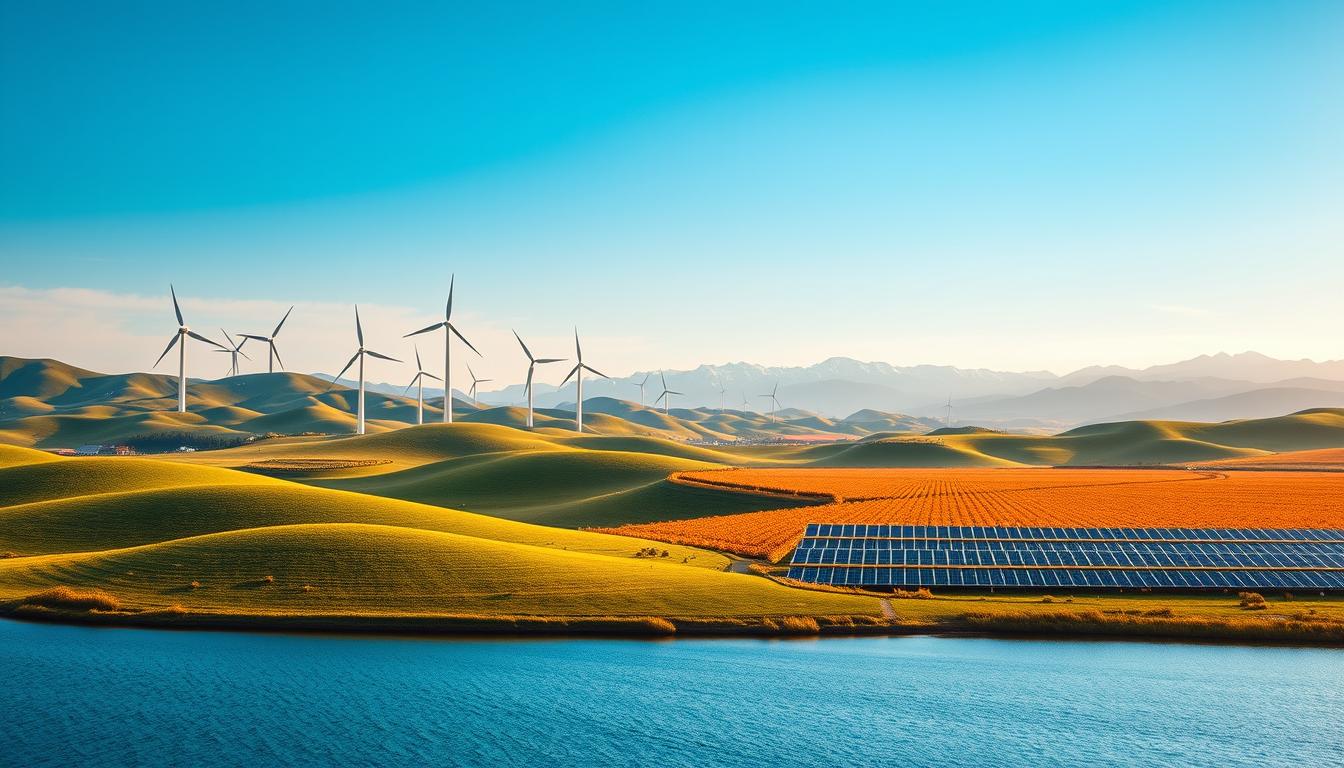
Electrification: Cleaning Up Consumption and Sectors
Electrifying end uses is the fastest way to cut pollution in homes, vehicles, and industry. It replaces direct combustion with cleaner electricity and links lower emissions at the point of use to cleaner generation sources.
Heat pumps and building heating/cooling
Heat pumps deliver high efficiencies for heating and cooling across U.S. climates. Paired with weatherization, they cut bills and comfort complaints. Switching from gas or biomass stoves to induction cooktops also reduces indoor pollution.
Electric mobility and EV batteries
Battery prices have fallen, ranges have improved, and charging networks are expanding. This combination lowers ownership costs and removes barriers to adoption.
Smart charging and managed demand can align vehicle loads with renewable generation and ease grid stress. Utilities and planners should prepare distribution upgrades and flexible tariffs.
Workforce training and consumer incentives speed equitable uptake. Building retrofits—insulation, heat pump water heaters, efficient appliances—boost comfort and cut consumption. Electrification also improves local air quality, yielding clear health benefits in urban neighborhoods.
Energy Efficiency: The Fastest, Cheapest Climate Action
Cutting demand through efficiency upgrades is the fastest, lowest-cost way to shrink consumption and emissions across sectors.
COP28 called for doubling global annual improvement rates by 2030. That goal means faster retrofits, stronger appliance rules, and more efficient industrial systems. Early savings compound: each avoided kilowatt-hour reduces the need for new supply later.
Buildings, industry, and appliances that cut consumption
In buildings, envelope upgrades, high-performance windows, optimized HVAC, and smart thermostats cut bills and peak demand. Updated appliance standards reduce standby loads and raise baseline performance.
In industry, efficient motors, improved drives, process-heat optimization, waste-heat recovery, and digital controls lower operating costs. These measures boost competitiveness and reduce emissions from manufacturing.
Policy, finance, and scaling workforce capacity
Policy tools—codes, performance incentives, and targeted financing—overcome upfront costs and speed deployment. Measurement and verification, benchmarking, and continuous commissioning lock in real savings.
Workforce training and certified retrofit programs are essential to scale nationwide. Efficiency supports affordability, strengthens energy security, eases grid strain during extreme weather, and advances clean development goals.
Action now on these targets makes the broader energy transition cheaper and more resilient for U.S. communities.
Grid Modernization and Energy Storage: The Backbone of Reliable Renewables
Modern grids must expand and get smarter to carry growing amounts of variable renewable generation from distant sites to cities.
Scaling transmission and distribution connects remote wind and solar farms to load centers. The IEA says annual grid investments must rise to over $600 billion by 2030 from about $300 billion today, and networks may need roughly 80 million km more lines by 2040.
Under‑building networks risks higher costs and emissions—insufficient grid upgrades could add an estimated 58 Gt CO2 by 2050. Permitting, interconnection reform, and careful siting speed projects while respecting communities.
Storage options and flexibility services
Use lithium‑ion batteries for short‑ to medium‑duration shifting, pumped hydro for bulk capacity, and power‑to‑gas for seasonal, long‑duration needs. Each has a clear role in balancing supply and demand.
Digital tools—advanced forecasting, automation, and distributed resource orchestration—unlock flexibility. Virtual power plants, demand response, and smart EV charging help stabilize electricity with high solar and wind penetration.
Resilience measures matter: undergrounding critical lines, sectionalization, and grid‑forming inverters improve reliability in extreme weather. Cost‑reflective rates and targeted incentives attract private investments to finish the network build‑out.
Sector Pathways: Power, Transport, Buildings and Industry
Practical roadmaps for power, transport, buildings, and industry set the pace for deep decarbonization by mid‑century.
Clean electricity is foundational for cutting emissions across sectors. Phasing down fossil generation while scaling low‑carbon capacity is central to meeting net‑zero by 2050.
Electricity generation
Retire the highest‑emitting units, expand solar and wind, and add storage and firming resources to keep the grid reliable. Upgrade transmission to match new generation and plan supply to follow growing electrification of homes and industry.
Transport and mobility
Electrify light‑duty vehicles, build charging networks, and align charging with daytime and nighttime renewable output. For heavy trucks and aviation, pursue renewable fuels and green hydrogen where batteries cannot yet meet range needs.
Hard‑to‑abate sectors
Steel, cement, shipping, and aviation need efficiency gains, process innovation, and fuel switching to green hydrogen or advanced synthetic fuels. Direct electrification will play a role where feasible, backed by carbon management and procurement standards.
Planning tools must align generation growth with demand electrification. Ensure equitable access to clean mobility and efficient homes, and use measurement and disclosure to track progress across each sector.
Energy Transition Policy: Targets, Markets and Fossil Fuel Subsidies
Strong national rules and clear timelines steer private capital toward cleaner systems and steady growth.
COP28 urged tripling renewables and doubling efficiency by 2030 while calling for a fair move away fossil fuels. Those international signals push countries to turn NDCs into concrete laws, budgets, and permitting timelines.
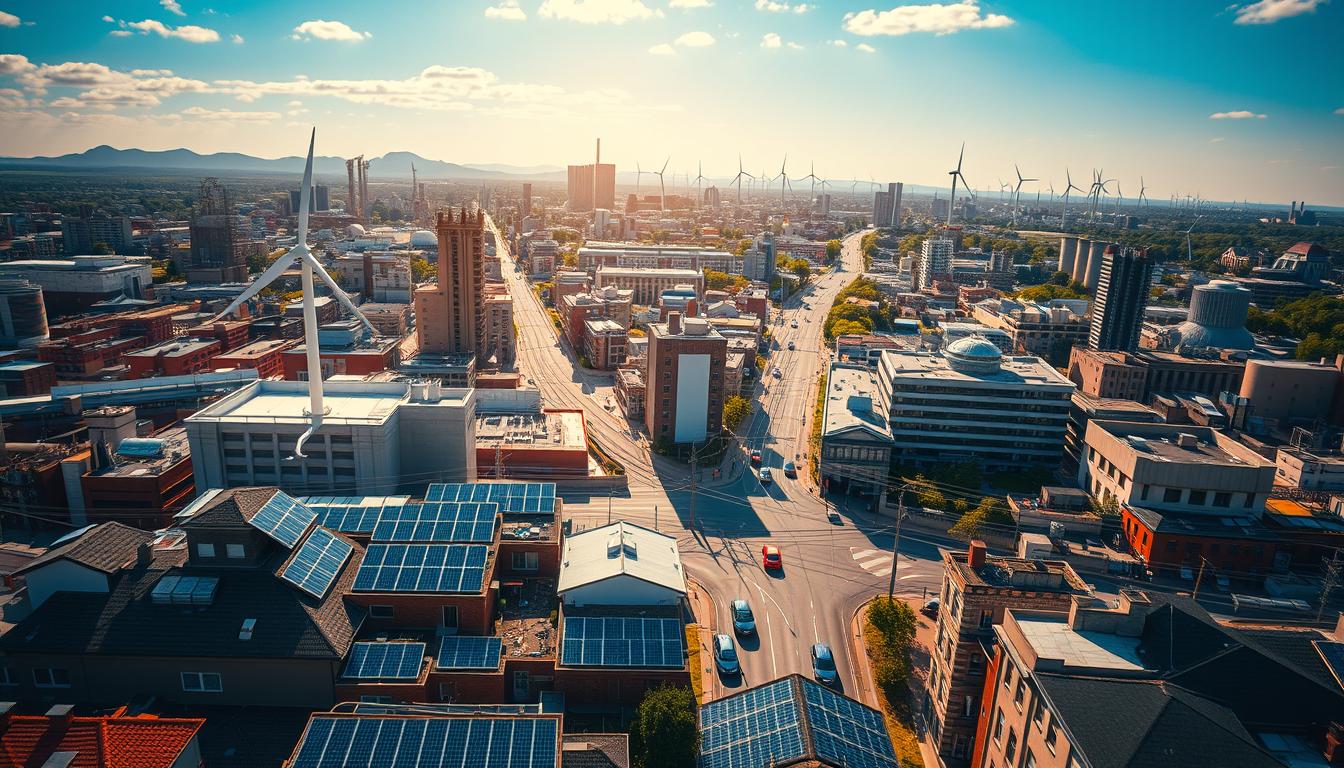
From global goals to bankable projects
Clear targets, streamlined permitting, and smart market design cut delays and lower costs. That makes projects more attractive to investors and speeds deployment across states and regions.
Subsidy reform, protections, and just outcomes
Phasing out inefficient fossil fuel subsidies unlocks public funds for clean development and new jobs. Pair subsidy reform with targeted assistance for low-income households, retraining for workers, and regional support to avoid leaving communities behind.
Standards, procurement, and tax incentives multiply public demand for clean tech and help scale manufacturing. Data transparency and mandatory disclosure let regulators and markets track progress and reduce greenwashing.
Cross-border cooperation on grids, supply chains, and best practices further lowers risk. Policy stability and predictable rules are key to cut financing costs and attract long‑term private investments.
Financing the Transition: Investments, Incentives and Risk Mitigation
Financing low‑carbon projects worldwide requires new tools that bridge public aims and private risk appetites. Emerging and developing economies (excluding China) attract only about one‑fifth of clean investment because of policy risk, currency exposure, and shallow capital markets.
Blended finance improves the risk‑return profile for private lenders. Concessional capital, sovereign guarantees, and political risk insurance make projects in higher‑risk countries bankable. These instruments draw private investments into new technologies and underserved markets.
De‑risking and fiscal incentives
De‑risking tools target macro, policy, and project levels. Hedging, local currency facilities, and standardized contracts cut exposure for sponsors. Feed‑in tariffs, tax credits, accelerated depreciation, and grants improve project economics and speed deployment of renewable energy.
Permitting, pricing and pipeline
Faster permitting and streamlined interconnection lower costs and timelines. Cost‑reflective tariffs paired with targeted protections keep utilities viable while protecting low‑income households.
To scale, countries need stable rules, clear procurement, and bankable project preparation. Standardized contracts and pipeline development attract long‑term investors and close the investment gaps that slow the overall energy transition.
Critical Minerals, Supply Chains and Circular Solutions
Demand for critical minerals is rising fast as batteries, turbines, and grids scale worldwide. Clean devices and large storage projects boost needs for lithium, cobalt, copper, manganese, and graphite.
Managing supply and social risks
Map essential minerals to their end uses: lithium and cobalt for batteries, copper for wiring and grid hardware, rare metals for turbines and power electronics.
Supply chains face long lead times and concentration risks. Africa holds major reserves, but rapid development can harm Indigenous Peoples and local communities without strong safeguards.
Circular and value‑chain solutions
Responsible sourcing needs standards, traceability, and certifications to prove ethical origin. Countries with resources can add value by investing in refining and manufacturing.
Recycling, design for disassembly, and material‑efficient designs cut raw‑material demand. R&D into lower‑criticality chemistries and substitution reduces future pressure on systems.
End‑of‑life management and domestic recycling infrastructure improve supply security and deliver local jobs while lowering environmental impacts during the broader energy transition.
Digitalization, Data and AI to Accelerate Impact
Data-driven systems and AI can cut emissions by up to 20% by 2050 across power, materials, and mobility by closing huge management gaps.
Smart grids and advanced analytics reduce waste from roughly 60% of current operations. They optimize generation, networks, and demand in real time to lower costs and speed the change to cleaner sources.
Practical tools and uses
AI improves forecasting for solar and wind, manages storage dispatch, and automates flexibility across distributed resources. Predictive maintenance raises uptime and extends asset life, cutting replacement costs.
Consumer innovations—smart meters, time‑of‑use rates, and home energy management—align demand with supply and unlock new savings. Interoperability standards let devices, DERs, and platforms work together smoothly.
Security and skills matter. Robust cybersecurity and data governance build trust, while workforce upskilling for digital operations and analytics ensures safe, effective rollout.
Energy Transition Actions for Businesses and Communities
Practical actions by companies and communities show how procurement and electrification deliver real savings and resilience. Firms and local governments can pair clear targets with tangible projects to cut emissions and improve service delivery.
Corporate targets, procurement and electrification roadmaps
Set science‑based targets, pursue renewable energy procurement (PPAs, VPPAs), and map electrification for fleets and buildings. Uruguay’s repurposed subsidies funded 150 electric buses — a model for corporate and municipal procurement.
Engage suppliers on product design to lower lifecycle emissions and track progress with transparent reporting to build stakeholder trust.
Community energy, access and just strategies
Support shared solar, microgrids, and affordability programs to expand access in underserved neighborhoods. Kazakhstan’s housing retrofits and Tanzania’s clean cooking rollout show how country programs boost health and development.
Municipalities can tap federal and state incentives for retrofits and EV charging. Mauritius’ 18 MW battery integration demonstrates how storage pairs with renewables to avoid large CO2 loads.
Finance and workforce: Use grants, credit enhancements, and local hiring commitments to fund small businesses and reskilling. Transparent targets, inclusive procurement, and local training make benefits durable for communities and businesses.
Conclusion
strong, A fast, fair shift in how we produce and use power will shape the climate and economic future of the world.
Key pillars: scale clean power, electrify end uses, maximize efficiency, and build modern, flexible grids that support resilience and jobs. COP28’s call to triple renewables and double efficiency by 2030 sets urgent, practical milestones.
Digital tools, data, and AI can speed deployment and attract investment. Coordinated policy, finance, and market reform will crowd in private capital at the scale needed.
Businesses, communities, and policymakers should align roadmaps with 2030 and mid‑century goals. The United States has a unique chance to innovate, manufacture, and lead toward a cleaner, healthier, and more prosperous future.
FAQ
What does “Energy Transition Strategies for a Sustainable Future” mean?
It refers to plans and actions that shift power systems away from fossil fuels toward renewable sources like solar and wind, while improving efficiency, grid reliability, and access. These strategies balance policy, investment, technology, and social measures to cut greenhouse gas emissions and protect public health.
Why is the energy transition important now?
Rising global temperatures, extreme weather, and international targets such as the Paris Agreement make rapid change urgent. Accelerating renewables and efficiency reduces emissions, improves air quality, and reduces long-term costs for countries and businesses.
How did past shifts from coal and oil to cleaner options happen?
Past transitions were driven by technology innovation, resource availability, policy and market forces. The move from coal to oil and gas occurred as new fuels and infrastructure scaled. Today, steep cost declines for solar and wind plus digital tools are enabling the current shift toward low‑carbon sources.
How dominant are fossil fuels today compared with renewables?
Fossil fuels still supply a large share of global power and heating, but renewables are the fastest‑growing source of new generation. Deployment of wind and solar is rising while investments in new coal plants decline in many regions.
What key drivers and co‑benefits push the shift away from fossil fuels?
Major drivers include climate targets, public health benefits from cleaner air, improved energy security, job creation in renewables, and reduced long‑term costs. Decentralized systems and storage also boost resilience for communities and critical services.
How do climate targets and emissions reduction improve public health?
Cutting combustion of coal, oil and gas lowers particulate pollution and other toxins, which reduces respiratory and cardiovascular illnesses. Meeting emissions goals also limits the severity of climate impacts that harm health through heat, floods and food disruption.
How does decentralized power enhance resilience?
Local generation such as rooftop solar, microgrids and battery systems can keep critical services running during outages. Decentralized resources reduce transmission losses and diversify supply, helping communities withstand extreme weather and supply disruptions.
Why are solar and wind central to renewables growth?
Both technologies have seen rapid cost declines and scalable manufacturing, allowing fast capacity expansion. They deliver large emissions reductions when paired with storage and smart grid solutions, and they fit diverse settings from utility to distributed installations.
What role do hydropower, geothermal and bioenergy play, and what are their limits?
These sources provide firm, dispatchable power and seasonal balancing. Hydropower and geothermal offer steady baseload output, while bioenergy can replace fuels in some sectors. Limits include ecological impacts, location constraints and feedstock sustainability challenges.
Are tidal power and green hydrogen viable options now?
Tidal energy has niche potential in consistent coastal sites but needs cost reduction. Green hydrogen—made from renewables and electrolysis—shows promise for hard‑to‑abate uses like steelmaking, shipping and seasonal storage, but requires scaled infrastructure and lower costs to compete widely.
How does electrification help clean consumption in buildings and industry?
Switching heating, transport and many industrial processes to electricity lets those sectors run on low‑carbon power. Heat pumps for buildings and electric boilers for some industry reduce direct fossil fuel use and improve efficiency when powered by renewables.
What is the outlook for electric mobility and battery technology?
EV adoption is accelerating thanks to better batteries, lower costs and expanding charging networks. Battery improvements extend range, reduce charging time and lower lifecycle emissions, making EVs a key tool for cutting transport emissions.
Why is improving efficiency considered the fastest, cheapest climate action?
Efficiency measures—better insulation, efficient appliances and industrial processes—cut demand immediately and reduce the need for new generation. They often pay back quickly through lower bills and reduce emissions at low cost compared with supply‑side investments.
How can grids handle more variable renewable supply?
Modernizing transmission, adding flexible storage like batteries and pumped hydro, deploying demand response, and expanding interconnections such as super grids all help balance variable output. Smart operations and forecasting using data and AI further stabilize supply.
What storage options support reliable renewables?
Short‑duration battery storage handles daily peaks; pumped hydro and compressed air provide bulk storage; power‑to‑gas and hydrogen offer long‑duration seasonal options. A mix of technologies delivers flexibility across timescales.
How will different sectors decarbonize: power, transport, buildings, industry?
Power will shift toward renewables and storage. Transport will electrify and use low‑carbon fuels for heavy transport. Buildings will adopt heat pumps and efficient retrofits. Industry needs a mix of electrification, hydrogen and material efficiency to cut emissions in steel, cement and chemicals.
What policy tools accelerate the shift and address fossil fuel subsidies?
Clear targets, carbon pricing, renewable mandates, permitting reform, and subsidy reform are essential. Phasing out fossil fuel subsidies while protecting low‑income households and supporting worker retraining helps ensure a just change.
How can financing mobilize the investments needed?
Blended finance, public guarantees and de‑risking instruments attract private capital. Tax incentives, streamlined permitting and transparent market rules reduce uncertainty and lower the cost of building clean capacity and grids.
What about critical minerals and supply chain challenges for clean technologies?
Demand for lithium, cobalt and copper rises with batteries and electrification. Responsible sourcing, recycling, diversified supply chains and material‑efficient design reduce risks and environmental impacts.
How can digital tools and AI speed up progress?
Smart grids, predictive maintenance and demand forecasting improve asset use and cut emissions. AI enables optimized dispatch, better integration of distributed resources and potentially 20% emissions reductions in some operations.
What can businesses and communities do now to act?
Companies can set science‑based targets, procure renewables, electrify fleets and improve efficiency. Communities can advance rooftop solar, community energy projects and workforce programs that support a fair shift away from fossil fuels.

